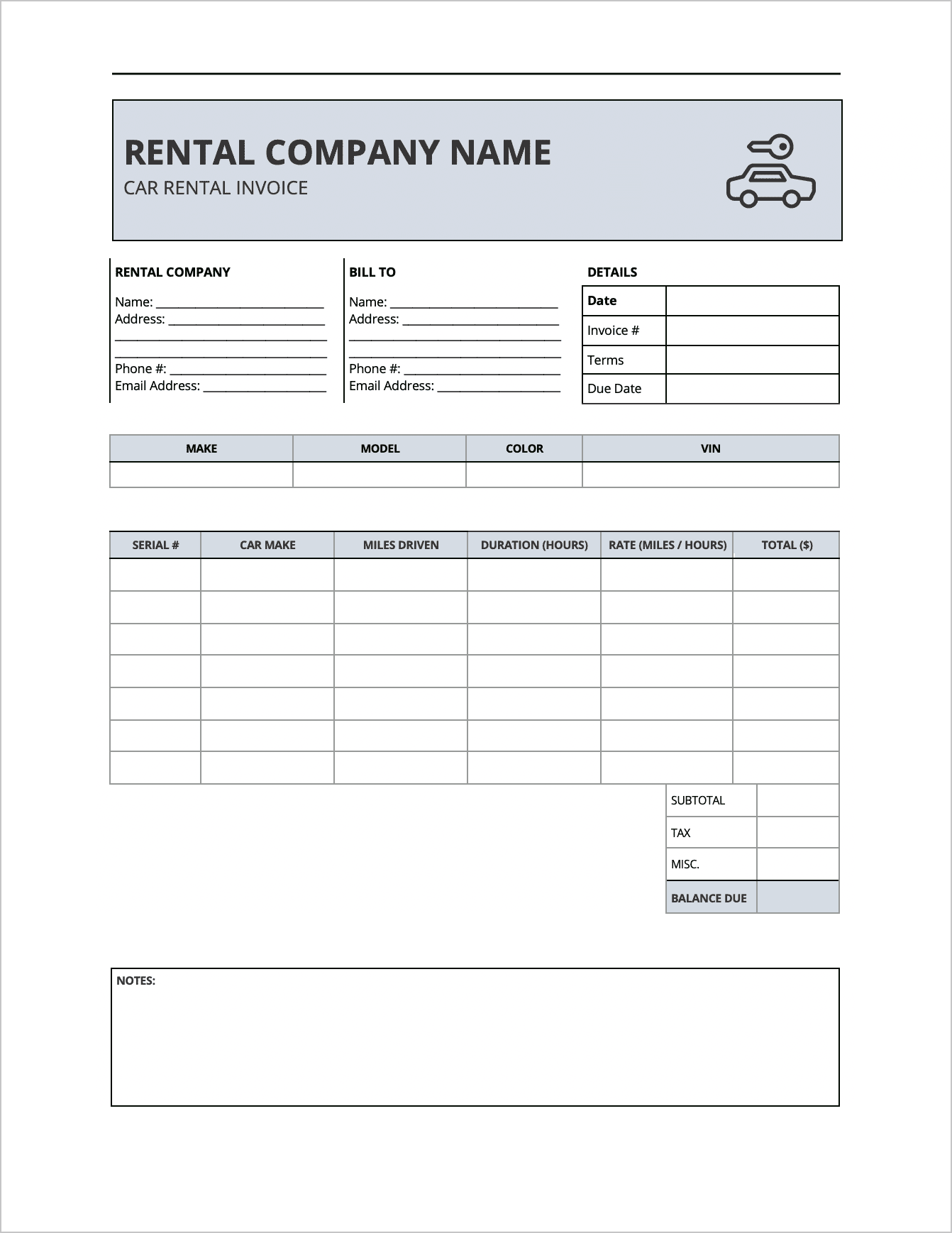Car Rental Invoice Template
A car rental invoice provides lenders of motor vehicles with a means of charging customers after the fact for the time they spent using a rental car. No matter how long the person has had the car, the document can provide an accurate calculation of fees. The invoice can be used for whatever pricing model the lender decides to charge, such as on the basis of miles driven, days kept, or a combination of both.
How Much to Charge for a Rental Car?
There are a lot of variables that go into the pricing of a rental car. The first thing to consider is the value of the car. What is the make and model of the car? Car lenders can charge more the newer the car is, and the better the manufacturer. In other words, the fancier the car, the more a lender can charge for it. Next, consider the age of the customer. It’s common practice for car lenders to charge drivers under the age of 25 an extra fee ranging from $10-25 per day. This extra fee is due to the added risk of lending to younger drivers.
It’s important for car lenders to consider the billing method they use. Some lenders “charge by day”, meaning there’s an agreed-upon flat fee accrued each day the borrower has the car. This fee is often paid upfront at the beginning of the lending period. Most car lenders charge less per day the longer a customer agrees to rent the car. For example, a renter should be charged $50 per day if they rent the car for 3 days, and $25 per day if they rent for a week.
Some lenders charge by the distance or by miles traveled. This billing method is achieved through GPS tracking and can provide a fairer valuation of the rental period. The price should operate on similar coordinates as charge-by-day, such as make, model & year of the car, and age of the driver. However, the lender should charge a rate-per-mile that’s appreciably higher than the cost of fuel.
